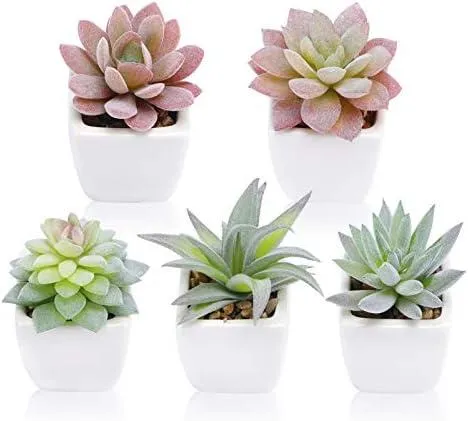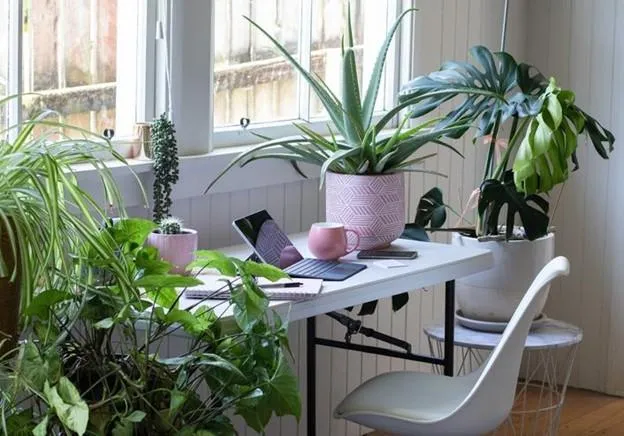Best Small Indoor Plants to Welcome Inside Your Home
As the weather gets cooler, many people find themselves wanting to bring more green life indoors. Small indoor plants are a great way to brighten up your home while requiring minimal care. In this article, you’ll find all the info you need to select and care for low-maintenance plants well-suited to indoor spaces.
Why Indoor Plants Are Good to Have
Indoor plants offer many benefits beyond just adding color and beauty to a room. According to research, plants have been shown to improve indoor air quality by removing toxins like formaldehyde, benzene, and trichloroethylene from the air. This can make your home’s atmosphere healthier, especially if you spend a lot of time indoors.
From my experience living with indoor plants, I’ve found they also have psychological benefits. Houseplants can reduce stress and boost mood. Simply interacting with plants or gazing at green foliage has a calming effect. Studies indicate plants may decrease feelings of anxiety, depression, and fatigue. So small indoor plants don’t just look nice – they can positively impact your well-being too!
Low-Light, Low-Maintenance Plant Options
When browsing options for small indoor plants, it’s important to consider the light levels in your home. Many living spaces lack bright, direct sunlight that outdoor plants require. Here are some top choices for low-light indoor conditions:
- Pothos – Very hardy and tolerant of low light. Variegated pothos varieties are especially beautiful. Easy to care for and propagate new plants from cuttings.
- Snake plant – Iconic rigid leaves that thrive in neglect. Goes without water for extended periods. Adds architectural interest to any room.
- Chinese evergreen – Crinkly, colorful leaves. Appreciates occasional misting. Bred to flourish in medium to low indoor light. Plentiful cultivars available.
- Peperomia – Takes well to low light. Fun, wide variety of leaf textures and shapes. Waxy foliage sheds dust. Requires infrequent watering.
- ZZ plant – Thick, waxy leaves hold moisture well. Very low-maintenance. Appears almost succulent-like. Stores water reserves in bulbs.
These are just a handful of attractive, low-effort plant options suited to low-light indoor conditions. With a little care, they’ll stay stunning and add natural appeal wherever you place them.

Tips for Caring For Your Small Indoor Plants
Once you’ve selected the right plant variety for your space, follow a few basic care principles to keep them looking their best:
- Water when the top inch or two of soil is dry. Overwatering is a common mistake that can damage roots and potentially cause root rot.
- Use a well-draining potting mix and ensure excess water can escape drainage holes at the bottom of pots.
- Provide occasional fertilizer during active growing periods in spring and summer. Indoor plants don’t need frequent feeding.
- Dust foliage periodically. Wipe with a damp cloth or spray with a homemade 1:10 dilution of mild dish soap and water.
- Repot only when roots emerge from drainage holes or the plant is pot-bound. This keeps roots from staying crowded.
- Prune to maintain shape and size. Cuttings can be propagated in water or soil.
- Rotate plants occasionally to ensure even sun exposure and prevent leaning.
As long as they receive the basics of water, light, space to grow roots, and occasional cleaning, most small houseplants reward owners with long-lasting beauty!
Dealing with Common Indoor Plant Problems
Despite our best efforts, plants are occasionally prone to issues like pests, disease, or wilting. Here are tips for handling some frequent indoor plant dilemmas:
- Pests like spider mites, scale, or mealybugs can invade if left unchecked. Look for tiny white specks or webbing and isolate infected plants. Spray with neem oil, insecticidal soap, or rubbing alcohol diluted 1:3 with water.
- Fungal or bacterial diseases appear as spots or discoloration. Remove any affected leaves or stems and improve air circulation. Too much moisture is usually the culprit. Improve drainage and wait for new growth.
- Leaf drop or yellowing can mean the plant needs more sun, water, or nutrients. If conditions have recently changed, the cause is usually environmental and not an illness.
- Wilting often happens due to under- or over-watering. Water thoroughly to rehydrate without standing in water. Repot in fresh soil if roots appear damaged.
With some care, most problems can be avoided or remedied without losing your plant. A bit of troubleshooting goes a long way for maintaining indoor plant health.
Incorporating Plants Throughout Your Home
Once you’ve selected a few starter plants, consider positioning them in different spots for optimal visual effect. Small plants can dress up any room.

- Place vines or trailing plants on shelving, hanging pots, or as tabletop accents.
- Use potted plants as decorative bookends or book display shelves.
- Line winding staircases with low-light options to frame stairs.
- Cluster plants on clustered plant stands or multipurpose furniture to create lush vignettes.
- Line sunny windowsills with fast-growing foliage or lightweight pots.
- Position taller floor plants in corners or behind furniture for definition.
Play with different groupings and heights for maximum visual impact. Backlight certain varieties near windows at night to emphasize texture and form.
Final Thoughts on Bringing Nature Inside
Small indoor plants are essentially carefree accents that instantly elevate any interior space. While a lot of greenery isn’t realistic for everyone, starting with just a few hardy varieties makes adding natural beauty basically effortless. Over time, your collection can expand as cuttings or new finds are incorporated. Who knows – you may even develop a bit of a green thumb in the process! So go ahead and try some of these beginner-friendly plant life at home. I promise you won’t regret it.
I hope this guide answered all your questions about selecting and growing easy-care small plants indoors. Please let me know if you have any other plant care issues! Happy planting.
Indoor Plant Care Guide
| Plant | Light Needs | Water Needs | Care Tips |
|---|---|---|---|
| Pothos | Low | Allow soil to dry out between waterings | Thrives with neglect, propagate in water |
| Snake Plant | Low | Water once every 2-4 weeks | Very drought tolerant, place in bright indirect light |
| Spider Plant | Medium | Water when top inch of soil is dry | Propagate plantlets, remove dead or brown leaves |
| Chinese Evergreen | Medium | Water when top inch of soil is dry | Tolerates low light, prune to maintain shape |
| Peace Lily | Medium | Water when top inch of soil is dry | Flowers are a sign it needs water,toxic to pets |
FAQ
-
What kind of inside plants do well?
Plants like pothos, spider plants, and philodendrons basically do great inside. They can handle low light and don’t need a whole lot of care. Snake plants and ZZ plants are also exceptionally easy to take care of.
-
How do I choose a plant for low light?
If light is kind of limited, go for sansiveria, Chinese evergreen, or pothos. They can put up with not much sunshine. Peace lilies and ferns may work too, even though ferns tend to be a little high maintenance. Leafy plants and vines like pathos or philodendrons seem to do well with not very much light.

-
Do indoor plants need fertilizer?
Most indoor plants only need fertilizer during their active growing season, perhaps from spring to fall. Nevertheless, it doesn’t hurt to give them a little nutrient boost every few months. You can buy special diluted formulas for houseplants or make a weak compost tea using organic material. Too much fertilizer could be awful though, so go easy on it.
-
How often should I water plants?
The frequency of watering depends on the sort of plant and the size of the container. As a general rule, check if the topsoil is dry about an inch down before watering. Plants like spider plants and pothos can go longer between drinks. On the other hand, peace lilies and orchids tend to need water more regularly. It’s better to under-water than over-water, which can cause root rot.
-
Why do plants die indoors?
Plants may perish inside for reasons like inadequate light, uneven watering, chilling drafts, or lack of fertilizer during growing seasons. Pests can also be a nuisance. According to expert sources, common factors are too much or too little water and not enough sunshine. If you give your leafy friends the right conditions, they basically shouldn’t face those problems.
-
Is it hard to care for indoor plants?
Caring for indoor plants may appear sort of difficult but it’s really not very hard at all if you select species that suit your circumstances. The trick is picking plants that can manage with your light levels, like sansiveria or pothos. They are amazingly low maintenance. Sure, there’s always a learning curve, but with a little research it’s astonishingly simple to keep houseplants alive and thriving. Maybe see if you have a green thumb!
-
Why put plants in your home?
Plants are known to improve indoor air quality by absorbing toxins and releasing oxygen. They can also have stunning positive effects on mood and reduce stress, according to experts. It’s kind of amazing how just having a few potted friends around makes a home feel more welcoming. Plus, caring for plants is gratifying in itself. So even if you kill every plant you touch, like I always seem to, it’s worth trying again for your health and happiness.

